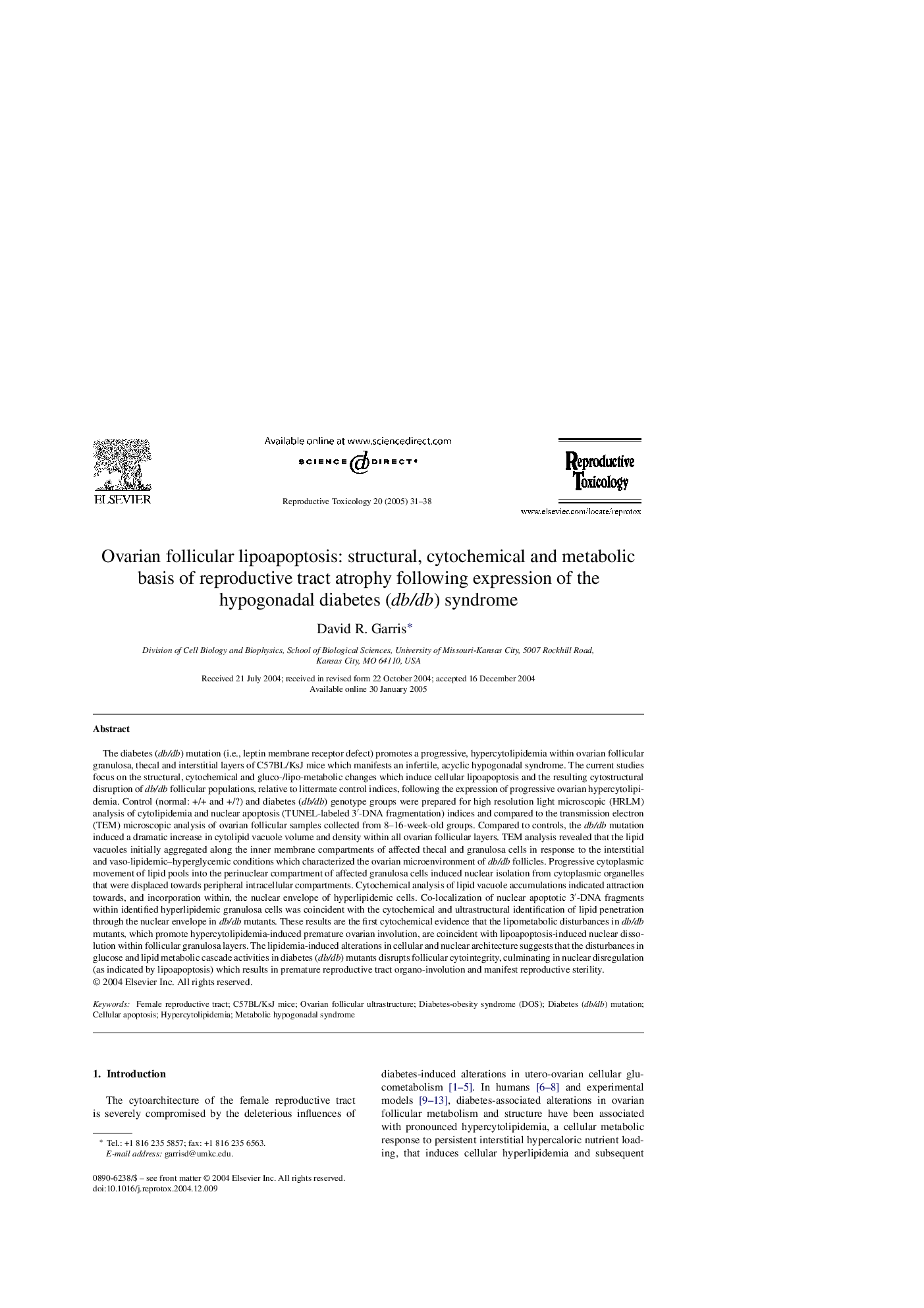| Article ID | Journal | Published Year | Pages | File Type |
|---|---|---|---|---|
| 9033959 | Reproductive Toxicology | 2005 | 8 Pages |
Abstract
The diabetes (db/db) mutation (i.e., leptin membrane receptor defect) promotes a progressive, hypercytolipidemia within ovarian follicular granulosa, thecal and interstitial layers of C57BL/KsJ mice which manifests an infertile, acyclic hypogonadal syndrome. The current studies focus on the structural, cytochemical and gluco-/lipo-metabolic changes which induce cellular lipoapoptosis and the resulting cytostructural disruption of db/db follicular populations, relative to littermate control indices, following the expression of progressive ovarian hypercytolipidemia. Control (normal: +/+ and +/?) and diabetes (db/db) genotype groups were prepared for high resolution light microscopic (HRLM) analysis of cytolipidemia and nuclear apoptosis (TUNEL-labeled 3â²-DNA fragmentation) indices and compared to the transmission electron (TEM) microscopic analysis of ovarian follicular samples collected from 8-16-week-old groups. Compared to controls, the db/db mutation induced a dramatic increase in cytolipid vacuole volume and density within all ovarian follicular layers. TEM analysis revealed that the lipid vacuoles initially aggregated along the inner membrane compartments of affected thecal and granulosa cells in response to the interstitial and vaso-lipidemic-hyperglycemic conditions which characterized the ovarian microenvironment of db/db follicles. Progressive cytoplasmic movement of lipid pools into the perinuclear compartment of affected granulosa cells induced nuclear isolation from cytoplasmic organelles that were displaced towards peripheral intracellular compartments. Cytochemical analysis of lipid vacuole accumulations indicated attraction towards, and incorporation within, the nuclear envelope of hyperlipidemic cells. Co-localization of nuclear apoptotic 3â²-DNA fragments within identified hyperlipidemic granulosa cells was coincident with the cytochemical and ultrastructural identification of lipid penetration through the nuclear envelope in db/db mutants. These results are the first cytochemical evidence that the lipometabolic disturbances in db/db mutants, which promote hypercytolipidemia-induced premature ovarian involution, are coincident with lipoapoptosis-induced nuclear dissolution within follicular granulosa layers. The lipidemia-induced alterations in cellular and nuclear architecture suggests that the disturbances in glucose and lipid metabolic cascade activities in diabetes (db/db) mutants disrupts follicular cytointegrity, culminating in nuclear disregulation (as indicated by lipoapoptosis) which results in premature reproductive tract organo-involution and manifest reproductive sterility.
Related Topics
Life Sciences
Environmental Science
Health, Toxicology and Mutagenesis
Authors
David R. Garris,
